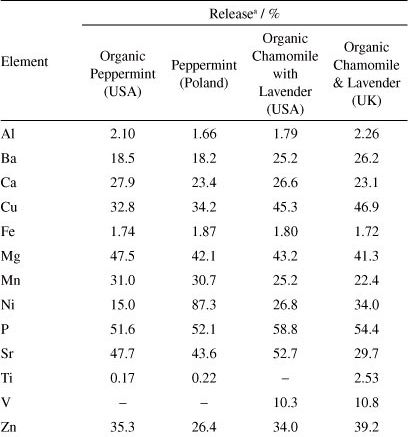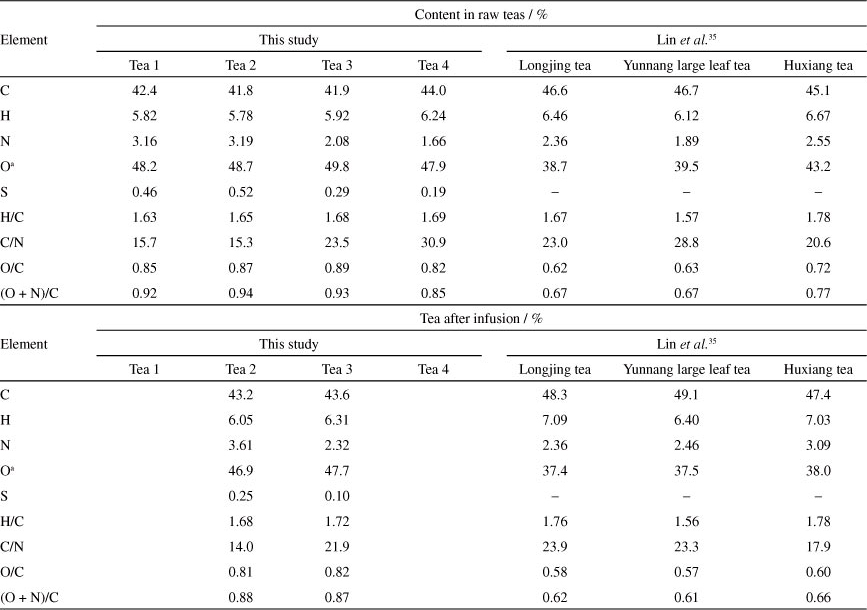Herbal teas (Mentha piperitae folium and mixture Marticaria chamomilla flos with Lavandula officinalis flos) were compared considering the total contents of micro (Al, Ba, Cd, Cr, Cu, Fe, Mn, Ni, Pb, Sr, Ti, V) and macro (C, H, N, S, Ca, Mg, P) elements, bioavailability and fractionation. Different methods (inductively coupled plasma optical emission spectrometry (ICP OES), Fourier transform infrared spectroscopy (FTIR) and CHNS elemental analysis) were applied. The microwave-assisted digestion procedure was found to be more effective than the hot-plate heating for the wet acid digestion of tea. The application of the modified BCR (Community Bureau of Reference) sequential extraction procedure exhibited differences in the concentrations of metal bound to reducible and oxidizable fractions. The accuracy of method was verified by analysis of certified reference material INCT-TL-1 Tea Leaves. The daily intake of all elements from the analyzed herbal tea infusion did not exceed the maximum permissible levels and does not constitute health risk.
herbal tea; infusion; sequential extraction; FTIR spectroscopy; CHNS analysis










